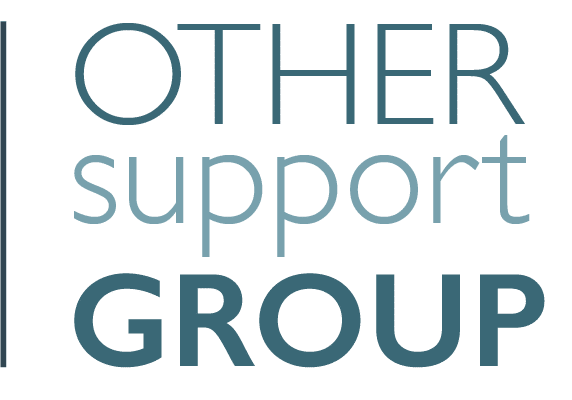Our Capabilities
We help clients
thrive & survive
unwanted situations.
Consulting
Advisory
Training
Operational
Our Capabilities
Sustained
initiative during unwanted situations.
Our situation managers and public affairs team will help
decision makers turning headwinds into tailwinds in an effective and proactive way to sustain contingency and the upper hand.
Situation Management
Mental readiness
Totally Committed
We are battle proved!
We operates both nationally and internationally, providing qualified consultancy, advice and education to business leaders and management teams within areas such as risk management and crisis management but also strategic communication.
300 +
10 +
Insights
Our Way of thinking!
Implementing these best practices in project risk management helps organizations achieve greater control over uncertainties, minimize disruptions, and increase the likelihood of project success. It ensures that risks are managed proactively and strategically, leading to improved decision-making, stronger stakeholder confidence, and better overall project outcomes.
Here are some key aspects of best practice project risk management:
1. Risk identification: It is crucial to proactively identify potential risks that may affect the project. This involves engaging stakeholders and using various tools and techniques such as brainstorming, checklists, and historical data analysis to capture both internal and external risks.
2. Risk analysis and assessment: Once risks are identified, they need to be qualitatively and quantitatively analyzed to prioritize their importance. Risks are assessed based on likelihood of occurrence and impact on project objectives. This helps in focusing efforts on managing high-priority risks.
3. Risk response planning: After analyzing and assessing risks, appropriate response strategies are developed to minimize or exploit them. These strategies may involve avoiding, mitigating, transferring, or accepting risks, depending on their nature and impact. Risk response plans should be realistic, actionable, and align with the project’s objectives.
4. Risk monitoring and control: Throughout the project lifecycle, risks should be continuously monitored and controlled. This involves tracking identified risks, identifying new risks, measuring effectiveness of implemented response plans, and making necessary adjustments. Regular communication among stakeholders is vital to keeping them informed about risks and actions being taken to manage them.
5. Lessons learned and continuous improvement: At the end of a project, it is important to evaluate the effectiveness of risk management strategies and capture lessons learned. This information can be used to update risk management processes and improve future projects. Continuous improvement is integral to enhancing project risk management practices over time.
Best practice crisis management involves a strategic and proactive approach to identifying, preparing for, responding to, and recovering from potential crises that may impact an organization. It is crucial for businesses and organizations to have a crisis management plan in place to effectively handle any unexpected events that could potentially harm their reputation, operations, or stakeholders.
Some key best practices in crisis management include:
1. Preparing in advance: Developing a comprehensive crisis management plan that outlines roles, responsibilities, procedures, and communication channels. This plan should be regularly reviewed, updated, and practiced through simulations and mock drills.
2. Establishing a crisis response team: Assembling a cross-functional team of individuals who are trained and experienced in crisis management. This team should have clear lines of communication and decision-making authority.
3. Communicating effectively: Implementing a strong communication strategy that includes regular updates to employees, customers, stakeholders, and the media. Transparency, accuracy, and timeliness are key to maintaining trust and managing the crisis effectively.
4. Monitoring and rapid response: Utilizing monitoring tools and metrics to identify potential crises as they develop. A swift and well-coordinated response is paramount in minimizing the impact of the crisis and preventing it from escalating.
5. Learning from past experiences: Conducting post-crisis reviews and analysis to identify lessons learned and areas for improvement. This feedback should be used to enhance the crisis management plan and organizational preparedness for future incidents.
6. Engaging with stakeholders: Engaging with key stakeholders throughout the crisis to manage their expectations, address concerns, and provide support. This includes leveraging social media, websites, and other communication channels to disseminate accurate and up-to-date information.
7. Taking responsibility and demonstrating accountability: Being transparent about the situation, accepting responsibility for any mistakes or shortcomings, and demonstrating genuine empathy and concern. This can help rebuild trust and credibility with stakeholders.
Overall, effective crisis management involves a proactive and strategic approach, good communication, and continuous improvement. By being prepared and having a well-defined plan in place, organizations can navigate crises more successfully and minimize potential damage
Best practice crisis management training is essential for any organization looking to effectively respond to and manage a crisis situation. It involves equipping key personnel with the necessary skills, knowledge, and techniques to lead and coordinate an effective crisis response.
The training should cover various aspects of crisis management, including the identification and assessment of potential risks, development of crisis response plans, effective communication strategies, and the implementation of necessary actions to mitigate the impact of a crisis. It should also focus on developing situational awareness, decision-making skills, and the ability to remain calm and composed under pressure.
Key components of best practice crisis management training may include:
1. Risk assessment and planning: This involves identifying potential risks and vulnerabilities within the organization, analyzing their potential impact, and developing proactive strategies to mitigate and manage these risks.
2. Crisis response planning: Developing comprehensive crisis response plans that outline clear roles, responsibilities, and procedures to be followed during a crisis. This includes establishing communication channels, identifying necessary resources, and defining crisis management teams.
3. Effective communication: Teaching effective communication techniques to ensure clear, accurate, and timely dissemination of information during a crisis. This includes understanding the different stakeholders, utilizing various communication channels, and managing media relations.
4. Decision-making and problem-solving: Training individuals to make effective decisions and solve problems under the pressure and chaos of a crisis. This may involve scenario-based exercises and simulations to build confidence and enhance decision-making skills.
5. Coordination and teamwork: Emphasizing the importance of teamwork and coordination during a crisis. This includes facilitating effective collaboration among various departments, agencies, and stakeholders to ensure a cohesive and coordinated response.
6. Post-crisis evaluation and learning: Encouraging organizations to review and evaluate their crisis response efforts to identify weaknesses and areas for improvement. This includes conducting post-incident reviews, documenting lessons learned, and implementing changes to enhance future crisis responses.
Best practice crisis management training provides organizations with the necessary tools and knowledge to effectively respond to and manage crises. It helps build resilience, enhances preparedness
.
Latest Insights
Noteworthy Insights
We welcome and celebrate different perspectives to help our firm, our clients and our
people.












